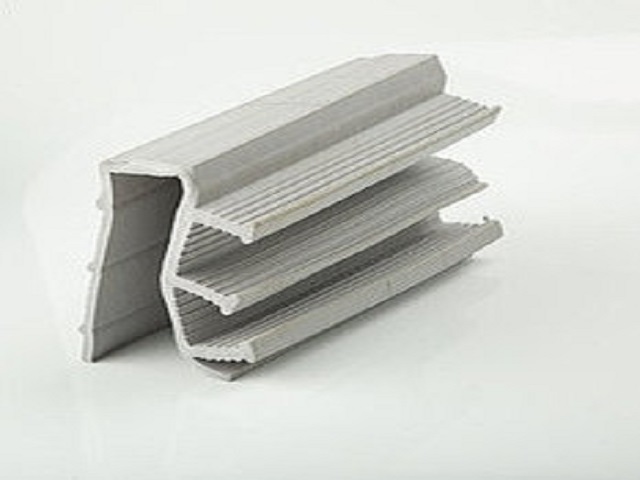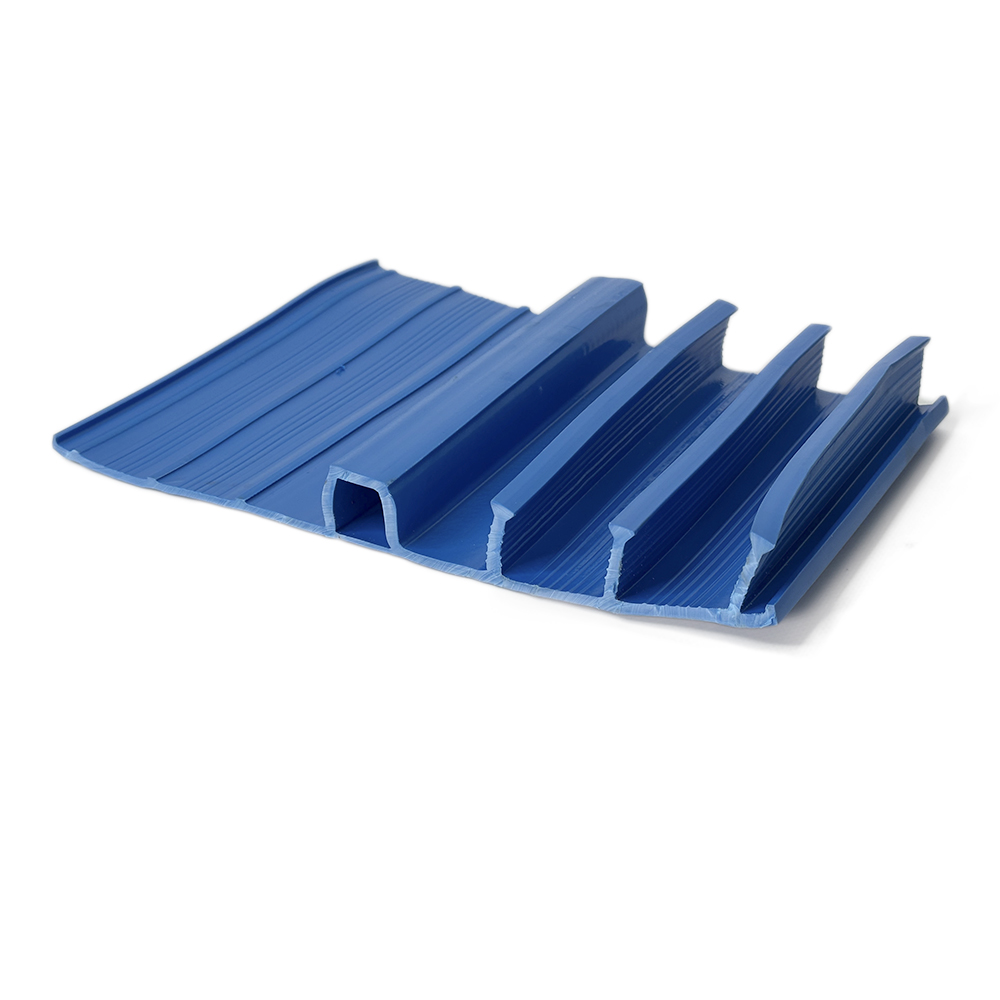External hydraulic gasket for working seams PROTEX HP 500, blue, bay 20 m
External hydraulic gasket for sealing and waterproofing of technological working seams in monolithic construction PROTEX HP 500, bay 20 m
1 007,00 uah
Hydroshonk HP 500 is used for sealing and waterproofing technological joints in monolithic construction of buildings, including foundations, underground parking lots, tunnels, canals, etc. They are mounted directly on the formwork sheet from the side of the expected water pressure. They are made of plasticized PVC-p polyvinyl chloride.
- the shape allows it to be securely embedded in a concrete structure
- the presence of ribs on the locking plane prevents the penetration of moisture into the structure
- It is used when concreting monolithic reinforced concrete structures is interrupted
- in particularly important structures, it is complemented by an internal hydraulic gasket
- It can be used in structures with special requirements to ensure tightness
- withstands high water pressure from the outside
- easy to install, does not require changing the reinforcement frame
- Suitable for all types of structures
- It is supplied in rolls of 20 m.p.;
| Material | Plasticized polyvinyl chloride (PVC-p) |
| Colour | Blue |
| Packaging | Rolls of 20 m.p. |
| Roll length deviation, m, no more | ± 0,5 |
| Size deviation | According to the CD |
| Shore hardness, A | 70 ± 5 |
| Density, g/cm3 | ≈ 1,4 |
| Tensile strength, MPa | ≥10 (DIN 53455) |
| Elongation at break, % | ≥ 275 |
| Temperature resistance, °C | from -35°C to 70°C |
| Chemical resistance | - from constant exposure to water and wastewater; - from short-term exposure to inorganic alkalis and low concentration acids, mineral |
| UV resistance | Not stable |
| Service life | at least 25 years old |
Material : Plasticized polyvinyl chloride (PVC-p)
Color : Blue
Packaging: Rolls of 20 m.p.
Roll length deviation, m,: not more than ± 0.5
Size Deviation : According to CD
Shore hardness, A : 70 ± 5
Density, g/cm3 : ≈ 1.4
Tensile strength, MPa : ≥10 (DIN 53455)
Elongation at break, % : ≥ 275
Temperature resistance, °C : from -35°C to 70°C
Chemical resistance :
- from constant exposure to water and wastewater;
- from short-term exposure to inorganic alkalis and low concentration acids, mineral oils.
UV resistance : Not resistant
Service life : 25 years
Installation procedure and rules:
- The hydraulic shutter is installed in the design position, so that the middle of the hydraulic shutter is located in the center of the intended deformation seam.
- The fastening is made directly to the formwork.
- Holes for fasteners are allowed to be made only in the extreme zone of the hydraulic gasket, behind the extreme anchor.
- The mounting pitch is 200-300 mm, symmetrically on both sides.
- Additional fastening is also performed to the reinforcing frame with knitting wire.
- The connection of the key is made by welding, by heating the ends of the key in a special conductor (for each key there is an individual conductor) or using an industrial hair dryer or a flat heating element.
- The temperature of the spike is about 200 ° C (selected experimentally).
- To connect the dowels by the "cold" method, glue is used, for example, a one-component paste-like glue based on the silane-modified polymer InnoElast
The Protex HP 500 hydraulic gasket is our reliable and multifunctional waterproofing technology, specially designed for monolithic construction of buildings, including foundations, underground parking lots, tunnels, canals and other facilities.
This hydraulic gasket will be able to fully meet your sealing and protection needs.
Advantages of the Protex HP 500 hydraulic spigot:
The shape of the hydraulic shutter allows it to be perfectly integrated into the concrete structure, ensuring reliability and durability.
The presence of ribs on the locking plane guarantees the absence of moisture penetration into the structure, providing unsurpassed waterproofing. The Protex HP 500 hydraulic gasket can be used in reinforced concrete structures with interruptions in concreting, which makes it a universal solution for all types of projects.
If it is necessary to provide additional tightness in particularly important structures, we recommend using an internal Protex hydraulic gasket.
Our hydraulic gasket is suitable for structures with special requirements where tightness is critical.
Resisting the high pressure of external water, the Protex HP 500 hydroshonk also copes perfectly with extreme conditions.
Ease of installation is another advantage of our hydraulic shutter, it does not require changing the reinforcement frame, which simplifies and speeds up the construction process.
The Protex HP 500 hydraulic shutter is suitable for any type of structure - from small facilities to large infrastructure projects.
The product is supplied in convenient rolls with a length of 20 meters, which ensures cost-effectiveness and ease of use.
The Protex HP 500 hydraulic gasket is a reliable solution for your project, which will ensure perfect sealing and waterproofing.
How do I install a hydraulic shutter?
- The hydraulic shutter is installed in the design position, so that the middle of the hydraulic shutter is located in the center of the intended seam.
- The fastening is made directly to the formwork.
- Holes for fasteners are allowed to be made only in the extreme zone of the hydraulic gasket, behind the extreme anchor.
- The mounting pitch is 200-300 mm, symmetrically on both sides.
- Additional fastening is also performed to the reinforcing frame with knitting wire.
- The connection of the key is made by welding, by heating the ends of the key in a special conductor (for each key there is an individual conductor) or using an industrial hair dryer or a flat heating element.
- The temperature of the spike is about 200 ° C (selected experimentally).
- To connect the dowels by the "cold" method, glue is used, for example, a one-component paste-like glue based on
- silane modified polymer Innoellast.
The Protex hydraulic gasket HP 500, 20 m bay, is an ideal solution for sealing and waterproofing technological joints during the monolithic construction of various buildings, including foundations, underground parking lots, tunnels, canals and other facilities.
Our hydraulic shutter is mounted directly on the formwork sheet on the side where water pressure is expected, providing effective protection against moisture penetration into the structure.
With its unique shape, our hydraulic shutter perfectly integrates into concrete structures, ensuring their reliability and durability.
The fins on the locking plane additionally protect against moisture penetration, making our hydraulic gasket an ideal choice for important structures. The advantage of our hydraulic gasket is that it can be used during a break in the concreting of monolithic reinforced concrete structures, as well as in particularly important facilities where additional tightness is required.
Due to its high performance, our hydraulic shutter can easily withstand high water pressure from the outside.
The installation of our hydraulic shutter is simple and does not require changing the reinforcement cage.
It is suitable for all types of structures and can be easily applied in structures with special requirements to ensure complete tightness. Produced in rolls with a length of 20 meters, the Protex HP 500 hydraulic tamper is a reliable and effective choice to protect your construction projects from moisture and increased water pressure.
How do I install a hydraulic shutter?
The hydraulic shutter is installed in the design position, so that the middle of the hydraulic shutter is located in the center of the intended seam.
The fastening is made directly to the formwork. Holes for fasteners are allowed to be made only in the extreme zone of the hydraulic gasket, behind the extreme anchor. The mounting pitch is 200-300 mm, symmetrically on both sides. Additional fastening is also performed to the reinforcing frame with knitting wire. The connection of the key is made by welding, by heating the ends of the key in a special conductor (for each key there is an individual conductor) or using an industrial hair dryer or a flat heating element. The temperature of the spike is about 200 ° C (selected experimentally). To connect the dowels by the "cold" method, glue is used, for example, a one-component paste-like glue based on
silane modified polymer Innoellast.
Related materials
Related materials
Repair hydraulic gasket for expansion joints of the PO-3 series, bay 20 m
Repair hydraulic joint for expansion joints of the PO-3 series
Repair hydraulic gasket for expansion joints ND-R 200, PVC, bay 20 m, blue
Repair hydraulic joint for expansion joints
Hydraulic joint PO-1 repair hydraulic joint for expansion joints , bay 20 m, gray
Repair hydraulic joint for expansion joints of the PO-1 series
Combined hydraulic gasket for working seams KAB-150, bay 25 meters
Combined hydraulic joint for working seams KAV-150
Internal hydraulic gasket for expansion joints VD 200, PVC, 20 m bay, blue
Internal hydraulic gasket for sealing and waterproofing of deformation movable joints VD 200, PVC, bay 20 m, blue color
Combined hydraulic gasket for working joints KAB-125, bay 25 meters
Combined hydraulic gasket for working joints KAV-125, bay 25m
Hydraulic gasket internal hydraulic gasket for expansion joints VD 240, PVC, blue, bay 20 m
Hydraulic gasket internal hydraulic gasket for expansion joints VD 240, PVC, bay 20 m
© "Protex-S" LLC2021 | Website created by MD Design



